8 oil change dos and don’ts
It’s a small job that somehow became a rite of passage for gearheads: Oil changes. The draining and refilling of engine oil is the first task that many budding wrench-turners undertake, and its certainly an important one. Like any other task in the automotive world, there are some pieces of institutional knowledge that comprise the key dos and don’ts for a smooth oil change. So let’s put these lessons learned out in the open, with the mission of shortening the process for newbies. And perhaps to reinforce some best practices for you veteran mechanics?
Don’t go crazy with warm-up
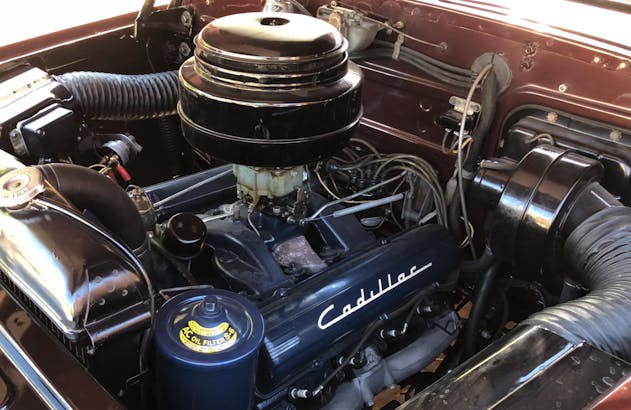
Modern oils are pretty amazing at suspending particles and contaminants, but there is still some junk that sinks down to the bottom of the pan. It needs to be stirred up to ensure it escapes when you pull the drain plug. Starting the engine and letting it idle for a minute or two is perfect for that final circulation. Run it any longer and you’re rewarded with nothing more than scalding hot oil that does nothing more than burn you. Before you pull that (drain) plug, give the engine a minute after shutting down, allowing the oil to drain to the pan from the nooks and crannies higher in the engine. But before you get underneath the vehicle to do the deed, remember you must…
Wear disposable gloves
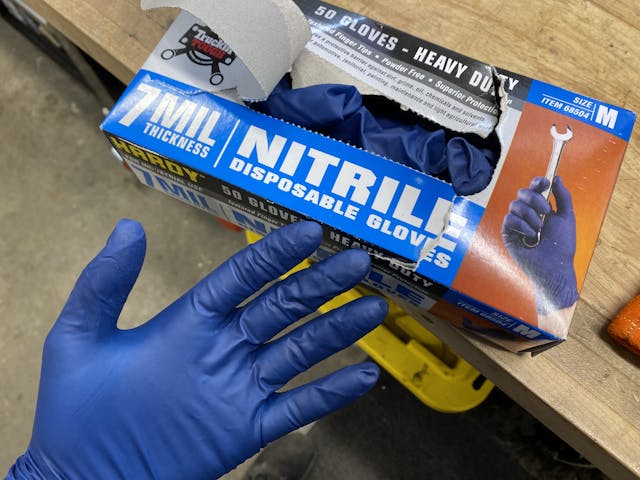
We all know the guy at the auto parts counter who has seriously gnarly hands from all the years being soaked in oil over decades of engine builds. That’s the visible damage. The invisible damage is sitting in your internal organs. All the hydrocarbons that get absorbed through the skin and are processed in our gut where they can’t be broken down. They end up accumulating in our body, which can cause serious health complications after years and years of chemical exposure. Preventing those issues is easy as putting on a pair of nitrile gloves. Use them even if it’s only for pulling the filter and drain plug, which you can do efficiently with…
The drain plug trick

It’s not groundbreaking, but nothing feels better than the perfect pull on a drain plug to ensure you don’t get any oil on your hand. The trick is pressure, not pulling. As you unthread the plug by hand, push in–against the bolt as in comes out–so the threads act as a seal with the outer edge. With a little practice you can get the pressure right (while not rocking the plug in the threads) and can spin the plug a full turn to feel for the “click.” That click means the bolt overlapped the last thread. With a swift motion away from the direction of oil flow, remove that now-loose plug. Presto! This can make thin viscosity oil changes much cleaner, and thick stuff like 20-50 can sometimes be spotless. In your excitement of not having a mess to clean up after draining, make sure you…
Don’t over tighten the drain plug or filter
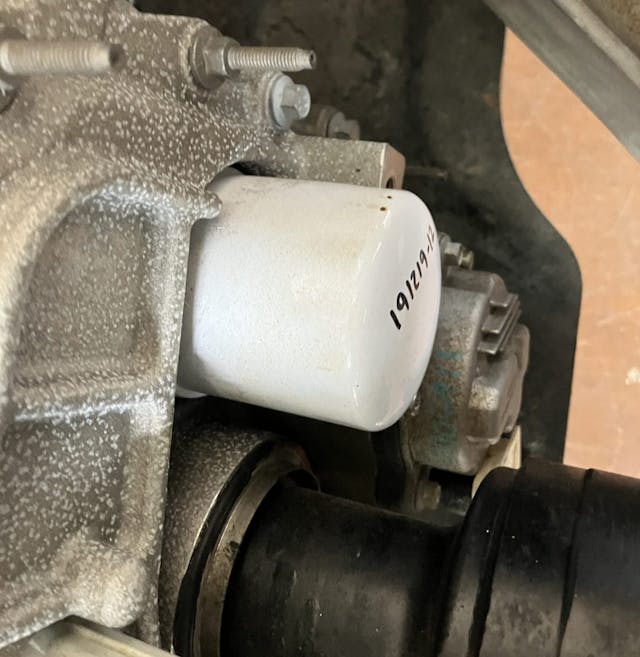
It’s come to the point where stuck filters and stripped drain plugs are no longer a joke. Neither the filter nor plug require any real torque when installed properly. Use a small amount of oil to lube the filter’s rubber seal, then spin it into place. After the gasket seats on the housing, turn it only about three-quarter of an additional turn. Some applications might call for a full turn, but that is usually reserved for heavy duty equipment. Any tighter than what the filter manufacturers call for and you run the risk of deforming that rubber seal, which could cause oil to leak past the seal. That’s bad news. Any oil spillage is bad, so when you are filling…
Just use a funnel

The oil fill port on most engines is in that perfect spot where it looks like you could pour directly into it, except that’s a lie. They seem to be ideally located, but cleaning up if you miss (by even the smallest margin) can be a major pain. Are we really going to work so hard to spot and address leaks, to keep our engines clean, and just ruin it while doing routine maintenance?
I’m not. A funnel all but guarantees I won’t have to do any clean up after filling, even if I’m distracted or letting my 7 year-old niece do the filling. Putting in that fresh oil feels good, but be careful and…
Don’t overfill
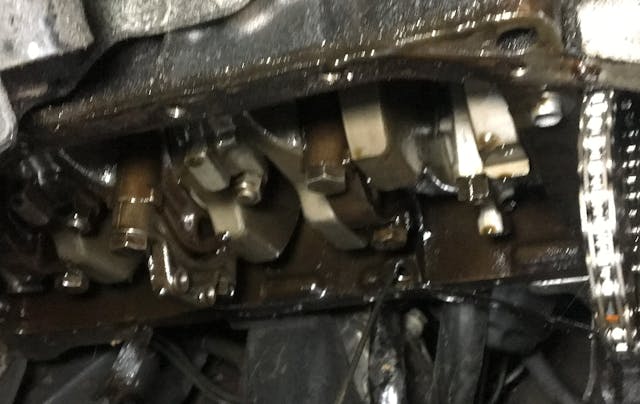
Too much oil is just as bad as not enough. Seriously. The oil level in a wet-sump engine is carefully calculated to keep the rotating assembly from whipping through the oil. That action causes foaming, and oil foam pushed through the oiling system is the same as not having oil at all. I don’t need to tell you how bad that can be, so check the service or owners manual for the proper fill level. When done, look at the dipstick as a double check. Luckily, the empty oil containers you now have at this point are are perfect to…
Recycle your used oil

It’s never been easier to properly recycle used oil, so there is no excuse to do otherwise. Just about any auto parts store takes it, so they should be your first trip in your freshly serviced vehicle to “return” your oil. Be sure to capture oil in a non-contaminated pan so that the oil can actually be recycled. Coolant is the main enemy here, so be sure to flush your drain pan before the oil change. Luckily you don’t have to worry about how dusty or dirty the pan is, but other fluids can defeat the purpose of recycling. But before you make the trip to recycle the oil, be sure to…
Reset the computer (or write down your service date)

Modern cars have an oil life monitoring system. Whether you trust it is a personal preference, but for the sake of eliminating confusion, go ahead and reset it now. Most reset procedures involves cycling the ignition key and pressing the throttle pedal a certain number of times. The service manual will outline it, or a quick search to an online make/model specific forum will have the instructions. If your vehicles are of the manual variety, write down the oil change date in a log book. Or consider service tracker kept in the car or garage, as it keeps you from forgetting what’s been done. Not to mention thisa paper trail shows good stewardship to a potential next owner, which can mean an easier sale for more money.
In all, oil changes can be simple and rewarding for newbies and DIY enthusiasts alike. Following these best practices will not only keep your vehicle happy, but also make the experience better for you each time. Do you have something specific you add to this process? Let us know about it in the comments below.

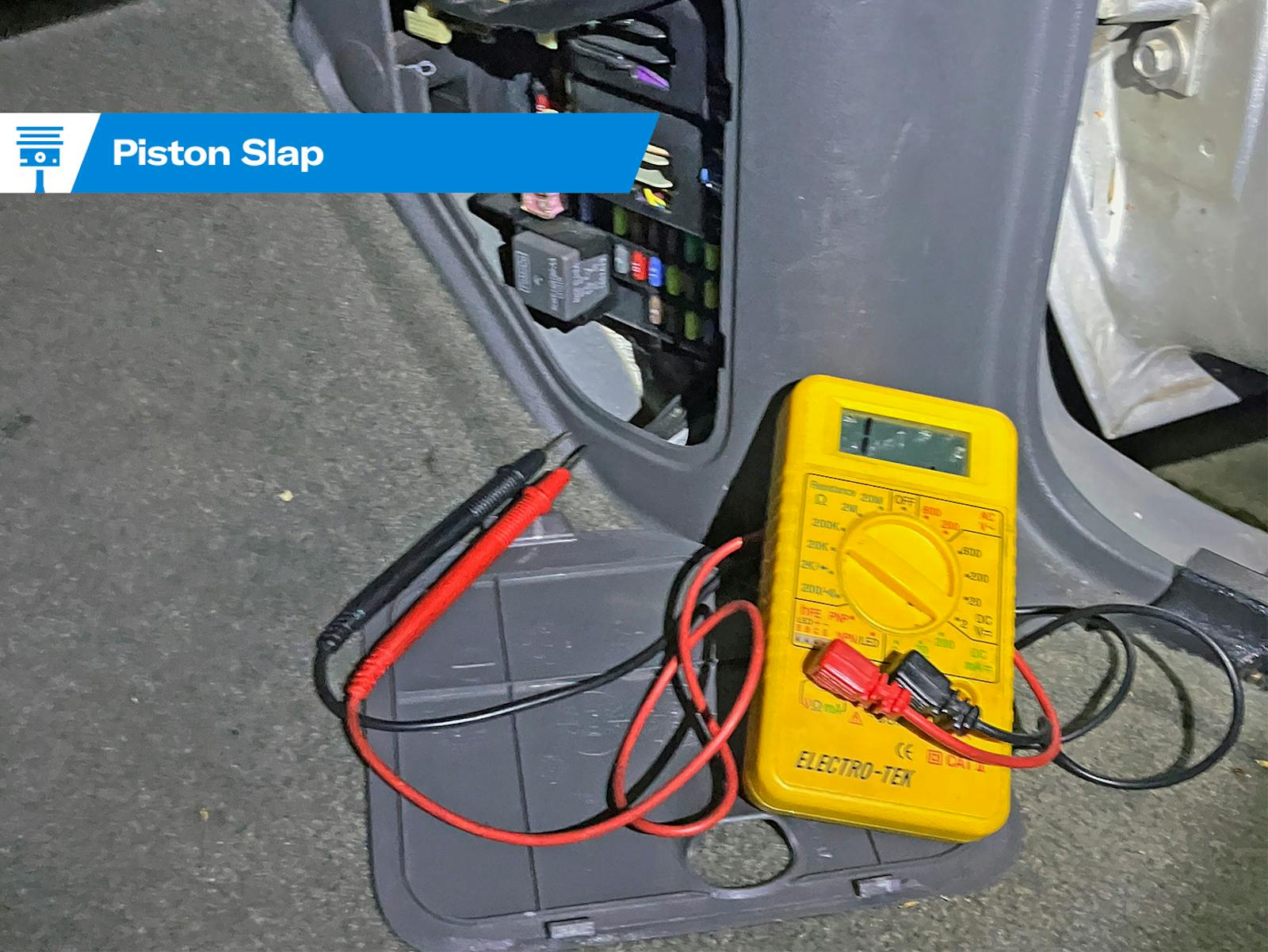

For years I have installed a remote filter unit that accepts two full size Ford filters. As the housing has four ports sending units for oil pressure and temperature can also be installed. A spin on adapter goes in the present filter location and lines go to and from. Todays cars use tiny filters for some reason and this will increase filtration by five or six times. This will also allow you to mount the filters in a spot you can easily access.
As a plus, this allows you to use steel braided hose and AN fittings which just look so super trick. Kits are available from Summit for little money.
I recently saw an Engine Masters episode that tested oil filters and K&N Gold came out on top.
I really found the comment about the 7 year old niece offensive and sexist. My Dad taught me to change oil at that age and was quite capable of the task without making a mess…..
That comment was not meant to be sexist at all and I apologize it came off that way. Maturity doesn’t advance with age the same in all people. There are plenty of seven-year-old girls and boys who can fill oil with the greatest of care, but based on my experience with my niece she would require supervision and guidance. It’s just a personal observation and why the sentence in the articles reads as reference to my niece specifically, not all persons of that age.
Good grief…
I use Amsoil products that recommend a Maximum range of 20k intervals. I have changed oil every 10k, and my 2015 Ford Escape had 196k on the odometer and never burned a drop of oil. The dealer had the valve cover off once and said, “keep doin what you’re doin”. I saw inside the engine and it looked great. On older cars, I do 5 k oil changes.
Also, an episode of Engine Masters showed horsepower gains on the dyno by running less oil. I have always run 1/2 quart less than full with great success. And, definitely fill a vertical oil filter completely before installing. No problems whatsoever. Just my experience.
READ THE LABEL ! Why do all major oil manufactures have multiples of the same oil? (Example 5w30 full synthetic.) Could it be that different engines have different requirements? If you are working on a Honda don’t put a Ford certified oil in it. BMW has 6 different full synthetic oils. Three of which are 0w-30 Two of them are interchangeable one is NOT. If your car is newer than 2000 it probably has a certified spec requirement. Variable valve timing it defiantly does. There is a difference between, Approved oils and oils that “meet specs”
Older cars will love synthetic. No certification required!
The 10K+ oil change is a big problem. Several vehicles have a less than stellar reputation as a result of this “sales gimmick” . Audi was once famous for promoting this. And the problem went like this….Oil gets toxic with too many miles….the toxins attack certain plastic parts in the engines –like cam chain guide ramps and in 996 series Porsche’s ….the little seal around the “sealed-for-a-lifetime” intermediate shaft bearing. And then the cam chain gets loose or, in the 996, the bearing loses it’s lubricant, destroys itself, and then the entire engine destroys itself. So, change your oil at least every 4K miles
I also place a large piece of corrugated cardboard under the car….One side of an appliance box. You are always going to spill a little bit and this will keep oil from staining driveway. the oil that is spilled can be wiped off and the cardboard saved for the next oil change.
Auto manufacturers have engineers who design things to fail after a period of time in order to make more money on repair parts. I was told this by two of them in the early 1980s. With their advice when I bought my new 1985 Honda Accord I cut in half the oil change requirements from 7500 miles to every 3-4000 miles. Sold the car to my sister-in-law in 1995 with 273,000 miles. Bought a 1995 Acura Integra and continued changing the oil every 3-4000 miles. Still have the car now with 412,000 miles. Bought a 1989 5.2L Ramcharger 4×4 and did the same. It lasted for 286,000 before dying of frame and body “cancer”. Engine still going strong. It’s replacement is a 2014 RAM 2500 4×4 diesel now with 105,000 miles. PS, the same goes for the requirement changing the transmission fluid. Have not had to replace any transmissions. As a side note the Acura is a standard and the pressure plate gave way (clutch disc still had a ways to go) at 362,000 miles.
Excellent advice on preventing automatic transmission failures, especially on more stressed ones in Honda/Acura vehicles. In the good old days before the requirement for ATF that costs $40 per litre, (thanks ZF), I would drain and fill the ATF on my Honda/Acura vehicles every second time I did an engine oil change. The old ATF costed $3 per litre, and only needed 3 litres, so it cost me an extra $9 per year.
Never had a transmission problem that way. Like the other guy said about oil and engines, “ATF is a lot cheaper than replacing a transmission”.
Glad to hear I’m not the only person doing a trans oil change every other engine oil change. On daughter’s ’06 CR-V, it doesn’t even need to be lifted to access trans drain plug. And, the trans has an actual, easily reached DIPSTICK!!! The Dodge and Jeep have aftermarket trans pans for extra capacity and magnetic drain plugs.
When you pre-fill the oil filter, pull the gasket off at the same time and put a thin film of oil under it. This allows the gasket to turn freely was you tighten the filter without making the gasket bind up. Just make sure to put the gasket back properly.
A couple other tips to help remind you. Once the car is up on ramps I open the hood and remove the oil cap so that the oil will flow more freely once the plug is removed. The open hood and removed oil cap serves as a reminder (to me) that the fresh oil hasn’t been added yet in case I get distracted. Also, for those cars with remote start, the remote start feature will not work if the hood is open for obvious safety reasons. Another reason to ensure the hood is open before draining the oil.
Also for cars that have a filter on top of the engine (like my BMW X5). It has a cartridge filter that fits in the filter housing. Just pour some oil in the housing before inserting the filter.
My 1994 Jaguar XJS 4.0 L straight six was smoking like a locomotive from the engine bay. Checking for a possible cause I did find some oil escaping from where the engine meets the exhaust manifold (thus, the smoking), but I had no idea what was causing the oil to leak in the first place. I checked all the documents that I have on the car and nothing would give me a clue as to what was causing that leak, including a couple of shops that looked at it and couldn’t fix it. Thinking of, perhaps, a major internal engine failure, I was already considering the shopping for a replacement engine. Even people in the on-line Jaguar forums could not think about a reason for this to occur, except for one guy. He asked me weather I’ve checked my oil level, just in case, and I found the level to be just about a 1/4″ above the MAX line. Well, this major department store’ s automotive department had recently changed the oil and filter on this car and they evidently over filled the oil. So, I drained some oil from it and the smoking was gone. and I realize now that, if I didn’t do the work, then I should always check it before leaving the place.
Daughter had her 2012 Subaru oil “changed” at a quicky oil change place. I had to rescue her afterwards when the car was bucking and smoking. Figured out they had drained the ATF and added oil to the engine. Zero ATF and an overfilled engine did not go over well with me. Resolved it without going to court.
As mentioned, absolutely the most important step, the one you do if you forget all the rest, is to make sure the old oil filter gasket came off with the oil filter and is not left stuck to the engine. Everything will seem fine with two gaskets until it isn’t and all the oil blows out while you are roaring up the freeway. One more similar failure is to forget to reinstall the front plug in a two plug oil pan. In the case of the ones Ford built, all the new oil fills into the rear of the pan and doesn’t start running out the missing front plug until after you are driving when it is too late to notice. Even Ford dealerships screwed this up back in the day (personal experience) and ended up replacing engines.
my 2004 5.3 z71 has 2 odometers as far as for trips i just set the first one back to zero at oil change when it hits 2400 miles i start looking for deals on oil and filter i am set on 2500 miles don’t cars what gm says for milage old school i guess
All good intel but the article & comments fail to mention that if you use a jack to get under your car to drain your oil, USE JACK STANDS! Jack failure is not an option!
Easy way to do “no mess” oil change. Vacuum sump pump (or 12 vdc electric pump). Sucks oil out of sump through dipstick tube into large metal container with gasketed screw on tops and welded handle. Easy no spill method to dump oil at parts store. Ive removed drain plug to check for residual oil in pan. Nothing came out. My oil filter is on top, so i dont have a need to go under vehicle or jack it up. Works on most 4 cycle engines. On my gas engines, after filling oil filter, I also crank the engine without starting until I see oil pressure, then let it start. Avoids dry starts (and lifter clatter) that way. (my 95 GM will not start while cranking if i hold the pedal to the metal). A bypass auxillary filter add on will keep the oil much cleaner than stock filters. (proven by lab analysis results). OTR trucks use great big ones.
And I NEVER buy store-brand oils. These are made up of recycled oil, filtered out, then mixed with new refined oil for the viscosity.